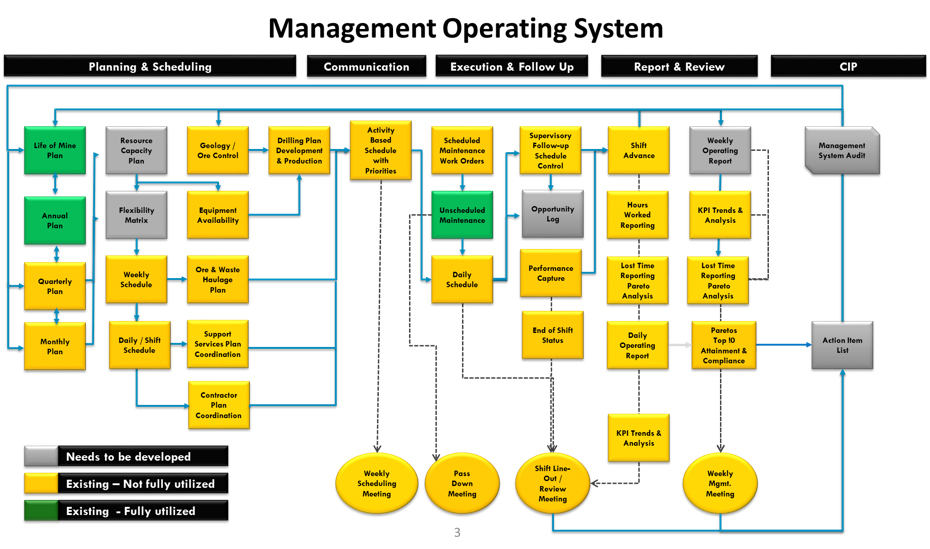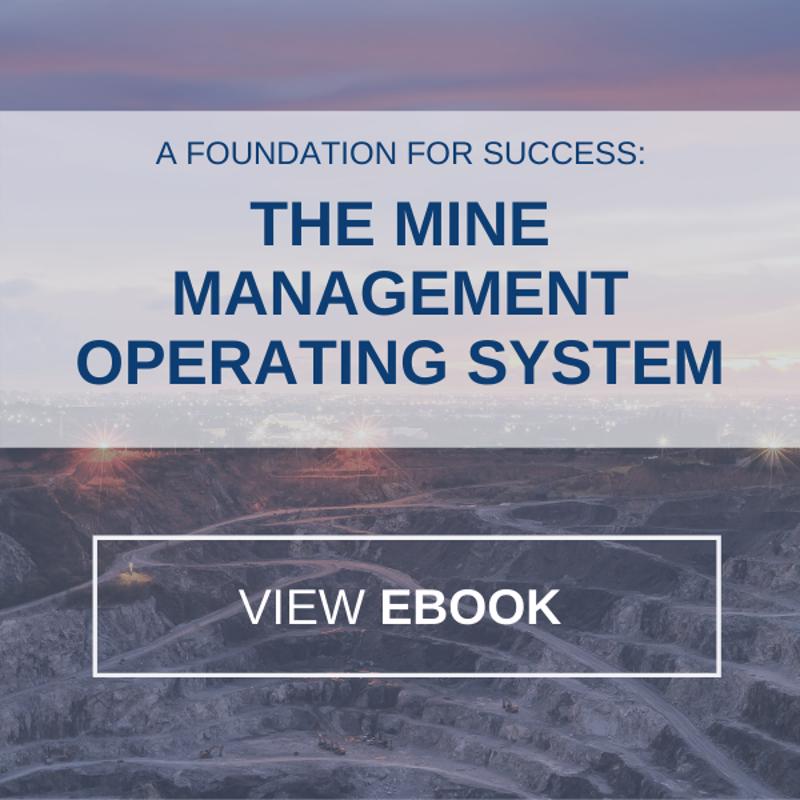
How Can A Management Operating System Help Your Organization?
As organizations today have become ever more reliant on networks and other systems that run using 21st century data-driven technology, one way in which they can maximize their potential is through the implementation of a management operating system.
What is a management operating system (MOS), and what can one do for my business?
According to CEO Magazine, an MOS allows for an organization to “better control the flow of work and production, driving higher outcomes in customer service, quality and cost.” At a minimum, these systems make use of tools that allow organizations to create plans for future work in certain operations, carry out that work, and then measure the work performance data to suggest future improvements that could be needed.
In short, an MOS is a set of tools, processes, and frameworks by which an organization’s employees operate. It is responsible for gathering data and then using the garnered information to inform decision making that fosters continuous improvement to address issues as they occur. These issues can range from production shortfalls to those related to worker safety; as such, companies that use production lines or have other types of hazardous workplace environments commonly employ management operating systems.
A MOS is a set of processes and resources by which businesses operate that drive the decision making of important organizational figures.
One way that an MOS can be described is that it is a set of processes and resources by which businesses operate each day that in turn drive the decision making of important organizational figures.
An effective MOS should be able to identify and quantify inefficiencies in an operating system and shift any reactive data-gathering methods towards those based in data analysis. This ensures that any adjustments can be made so operations are not adversely affected. An MOS should also use real-time feedback so an organization can safely direct operations, funding and other resources to maximize return on investment.
Organizations can observe some notable benefits after they implement an MOS, including cost savings, waste reduction, and increased product quality. Among other benefits, an MOS can help organizations identify and close workflow gaps, find ways to improve efficiency, or monitor operations to see if they are in compliance with company or government regulations and policies.
After an organization has implemented a management operating system, it may see the following benefits:
- Increases production cycle efficiency through the elimination of any bane to an organization’s workflows, such as unnecessary overtime or any operational and/or financial surprises.
- Ensures that key products such as raw materials are readily available at all times to meet any production requirements or needs
- Maximizes the potential of available workspace, equipment, inventory, and human resources
- Reduces excessive inventory and can help avoid any defective or outdated products from getting to customers
Human-run MOS still important in the impending age of automation
Some have argued that the MOS has become obsolete with the rise of automated data-driven decision making and the ongoing replacement of human beings in certain occupations with robots and artificial intelligence, according to CEO Magazine. That being said, the article’s author David Hand also argues that this view does not consider reasons that management operating systems were required in the first place, citing a few major points. In particular, Hand predicts that management operating systems will continue to be used wherever there are human beings employed instead of robots. Sectors reliant on human resources that have grown the fastest are the healthcare and professional services such as information technology and engineering, notably among others.
While organizations are able to reduce costs by making use of technology rather than humans, the article notes that cost is only one of two aspects that a customer requires to make a purchase, the other two being service delivery and quality. As a result, organizations that place too much of an emphasis on cost reduction amid a “new wave of innovation” related to technology use have been found to get away with poor customer service and product delivery. To avoid this dilemma, MOS principals such as short interval control and management of variance are important for any enterprise, no matter how big or small.
“Organizations must not be complacent. The struggle to remain competitive and to improve service delivery is unrelenting and a willingness to confront process shortfalls that drive customers away is vital,” Hand writes.
Adherence to an MOS and related principals can also have a positive impact on employees such as knowledge workers with regard to delivering better outcomes. Deadline commitment is the single most effective MOS principal that a knowledge worker can follow, Hand argues, and despite the stress of meeting deadlines, the practice can often result in large dividends.
How can my business best use an MOS, and what are the benefits?
In particular, owners of business operations can employ business management systems not only to bolster their bottom lines, but also to prepare themselves for planned growth or unexpected downturn. Forest Admin’s Thomas Didier concludes that while most businesses it has observed use different methods in their management operating systems, they center around four main components: processes, systems, roles, and structures.
When designing processes, businesses must be sure that they are safe, secure and clear for employees to understand and tools are used to support operations — never are they to be used in ways not dictated by the overall structure. This means that users should not use tools in inappropriate ways, especially those that could simply automate their inefficient methods. An effective MOS uses well-designed systems upon which their employees and processes are reliant to achieve goals, which means they should run smoothly and do not reduce established efficiency. Roles within a MOS should adhere to clearly defined job descriptions that require certain skill sets, and when combined with a business’s processes and systems can best utilize talents. Finally, the best-run management operating systems always establish a business-wide structure upon which the different roles within the company interact. This is usually done last because it ensures that the processes do not dictate the entire established structure and cause further issues.
“Many factors…can have an impact on the definition of your structure. As a result, it is unlikely that two companies with the same processes, systems, and roles will end up with the same structure,” Didier explains.
How to realize benefits when after implementing or improving an existing MOS
Businesses that do not make full use of a management operating system can undoubtedly improve the efficiency and overall profitability of their operations if they are able to create ones that effectively suit their needs. Regardless of whether an organization has an insufficient MOS already in place or does not use one at all, the development of a new one is a process that requires a great deal of investment and commitment from different organizational figures and departments. For example, some older production plants may have become reliant on relatively outdated production line methods and need to reduce observed downtime and inefficient processes in order to cut costs.
Regardless of whether an organization has a poorly planned MOS already in place or doesn’t use one at all, the development of a new one requires a great deal of investment and commitment from different key figures and departments.
Without an MOS in place, those responsible for the plant’s operations should first find a way in which to quantify key performance indicators related to products, assets and even everyday routines; there are different tools and methods that can be used to find out which information needs to be quantified, including those used by consulting services. As a result, conclusions drawn from the former can allow employees to operate more efficiently. This translates into a better understanding of the causes of production downtime, which can drive proactive and accurate decision making. Departmental training should be required with any future changes to a MOS to ensure that it still remains effective.
Rather than come up with the most basic of KPIs as a solution, organizations that use an MOS and aren’t seeing desired results need to reevaluate their methods of quantifying the information upon which they rely. For instance, one scenario might be that a major operation has become reliant on data collection methods that overlook key information explaining the causes of operational delays or unrealistic production deadlines and expectations. With the ability to see how workload expectations relate to overall productivity, a well-run management operating system can help an organization hit its numbers without worry each quarter.
When it comes to important areas in business operations such as the success and cost of a project or the safety and productivity of employees, knowing how to garner the right information and put it to good use is essential.
USC Consulting Group can help enhance your existing MOS or implement an entirely new one using its Client Technology Solutions like LINCS Lean Information Control System. Contact USC Consulting Group today to see how we can help your organization achieve desired outcomes.









